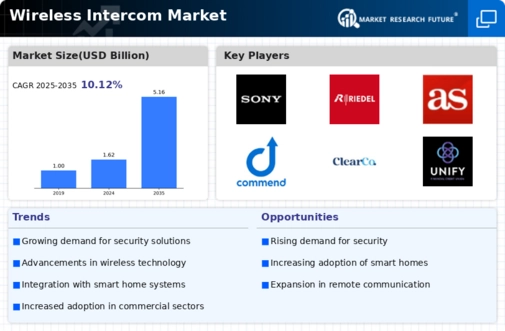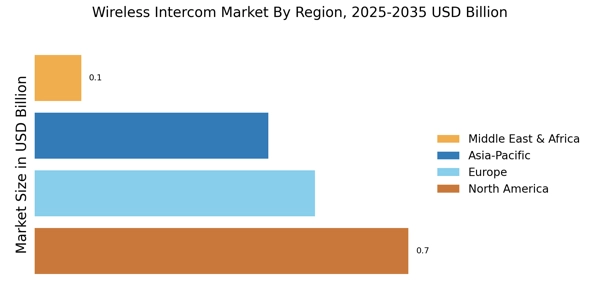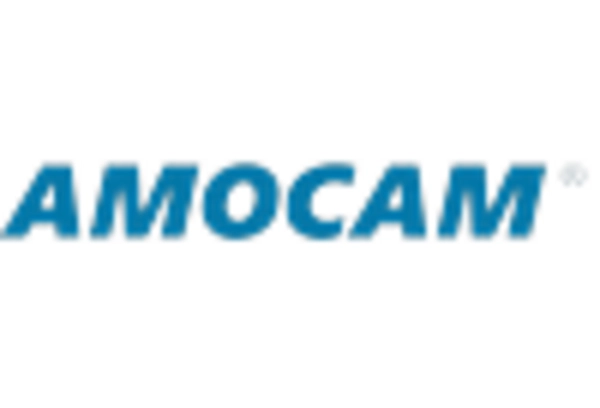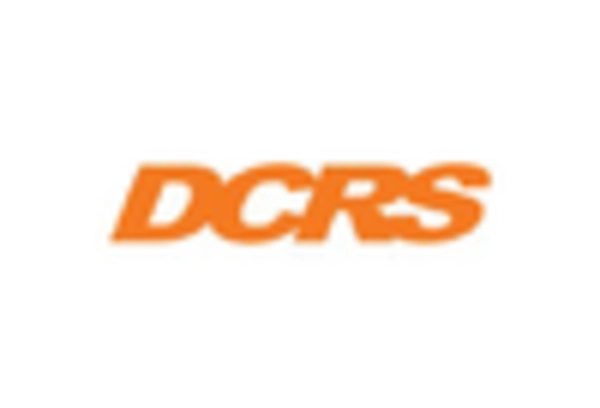Growth in Smart Home Integration
The Wireless Intercom Market is significantly influenced by the growing trend of smart home integration. As more households adopt smart technologies, the demand for intercom systems that seamlessly connect with other smart devices is increasing. This integration allows users to control their intercom systems through smartphones or voice-activated assistants, enhancing convenience and functionality. Market analysis indicates that intercom systems integrated with smart home technologies are projected to capture a substantial share of the market, potentially exceeding 30% by 2026. This trend not only reflects consumer preferences for interconnected devices but also drives manufacturers to innovate and enhance their product offerings.
Expansion in Commercial Applications
The Wireless Intercom Market is experiencing notable growth in commercial applications, particularly in sectors such as hospitality, healthcare, and education. Businesses are increasingly recognizing the value of efficient communication systems to enhance operational efficiency and customer service. For example, hotels are implementing intercom systems to streamline communication between staff and improve guest experiences. Recent statistics suggest that the commercial segment is expected to grow at a CAGR of around 8% over the next few years, driven by the need for effective communication solutions in various industries. This expansion presents significant opportunities for manufacturers to develop tailored intercom solutions that meet the specific needs of commercial clients.
Rising Demand for Security Solutions
The Wireless Intercom Market is witnessing an increasing demand for security solutions, particularly in residential and commercial sectors. As safety concerns continue to rise, consumers are seeking advanced intercom systems that offer features such as video surveillance, remote access, and two-way communication. This trend is particularly evident in urban areas where crime rates are higher. According to recent data, the market for security-focused intercom systems is expected to account for over 40% of total sales in the coming years. This shift towards enhanced security features is likely to propel the growth of the Wireless Intercom Market, as manufacturers respond to consumer needs with innovative products.
Increased Focus on User-Friendly Interfaces
The Wireless Intercom Market is seeing a shift towards user-friendly interfaces as consumers demand more intuitive and accessible communication solutions. Manufacturers are prioritizing the design of intercom systems that are easy to install and operate, catering to a broader audience, including those who may not be technologically savvy. This focus on usability is likely to enhance customer satisfaction and drive sales. Market Research Future indicates that products featuring simplified interfaces are expected to gain traction, potentially leading to a 25% increase in market share for user-friendly intercom systems by 2027. This trend underscores the importance of consumer-centric design in the competitive landscape of the Wireless Intercom Market.
Technological Advancements in Communication
The Wireless Intercom Market is experiencing a surge in demand due to rapid technological advancements in communication systems. Innovations such as Voice over Internet Protocol (VoIP) and enhanced wireless technologies are enabling clearer and more reliable communication. These advancements are not only improving the functionality of intercom systems but also expanding their applications across various sectors. For instance, the integration of artificial intelligence and machine learning is facilitating smarter intercom solutions that can adapt to user preferences. As a result, the market is projected to grow at a compound annual growth rate (CAGR) of approximately 10% over the next five years, indicating a robust expansion driven by these technological improvements.


















Leave a Comment